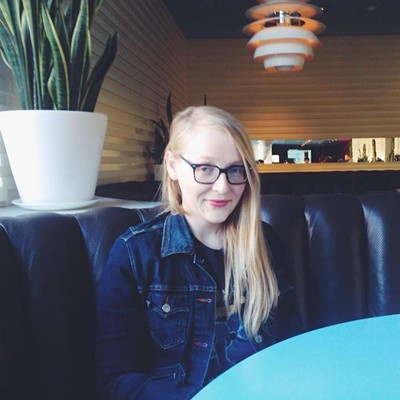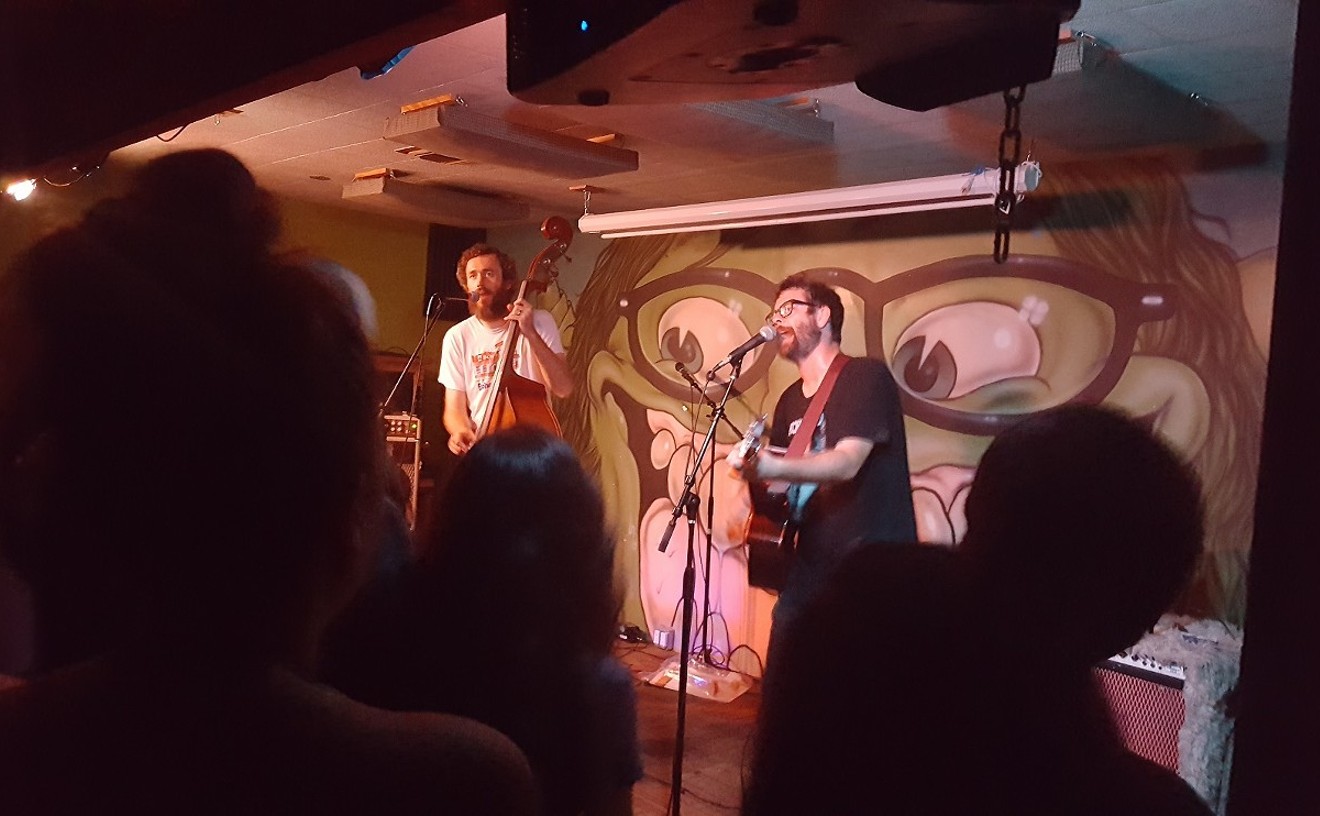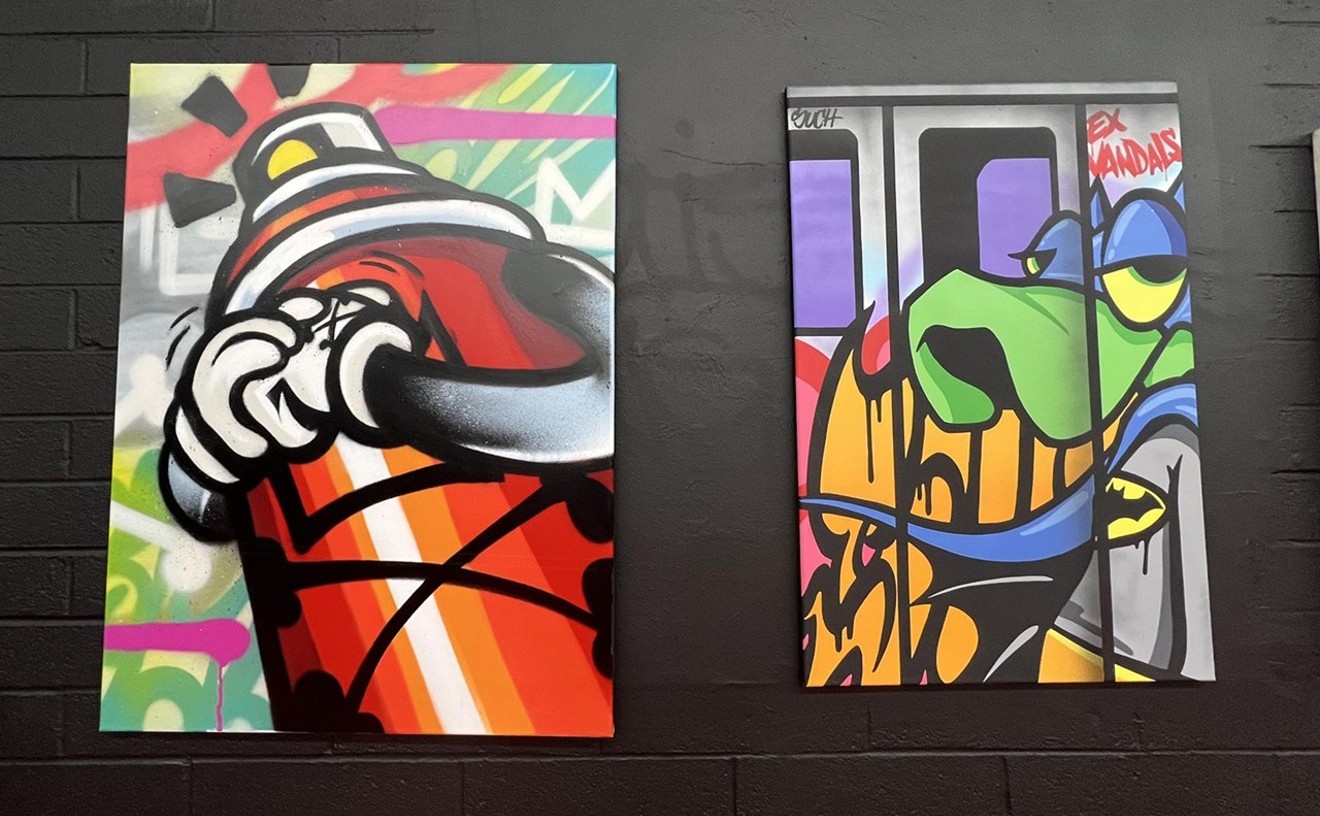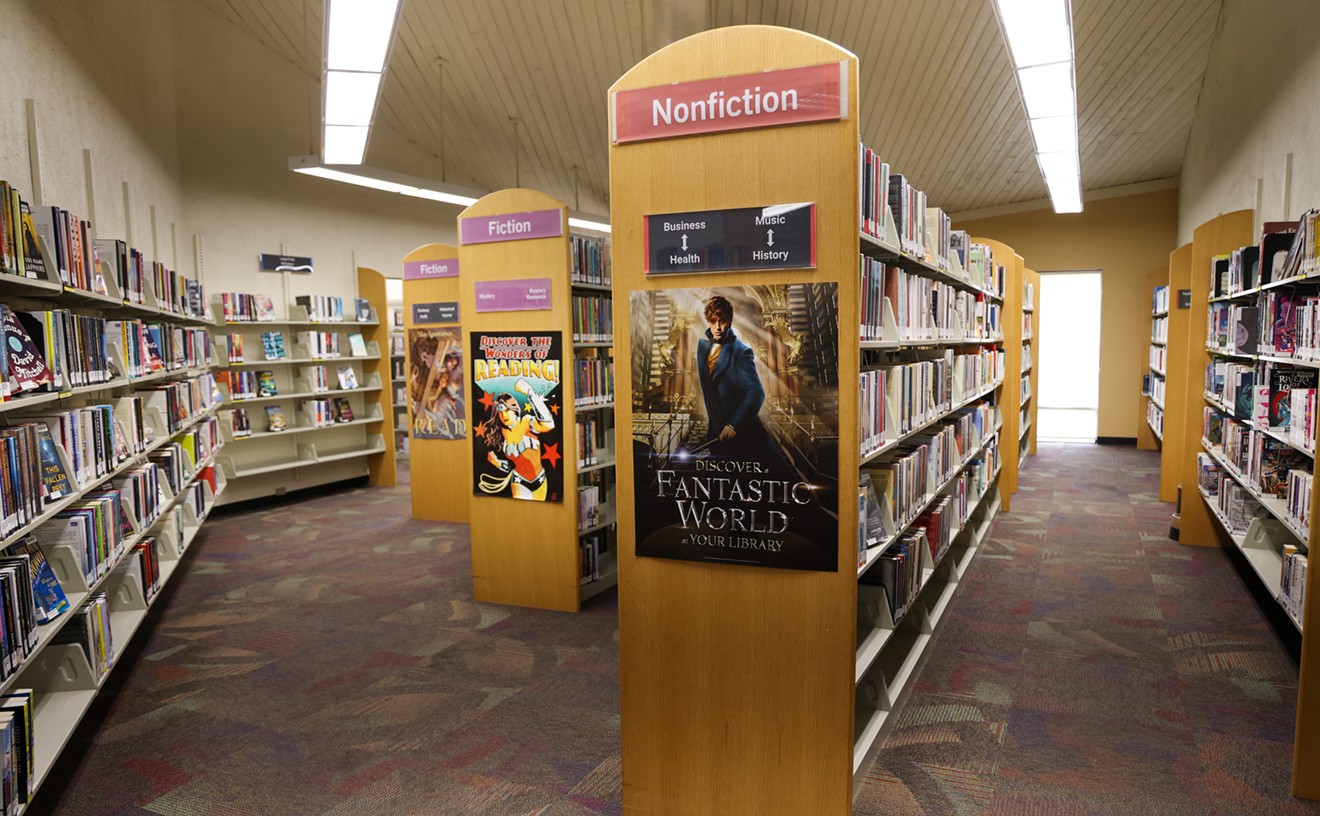The 1920s made a whole lot of noise. On the precipice of the Great Depression, the decade made its mark on American history with glamorous living and social evolution. World War I had ended. The stock market boomed. Prohibition banned booze. Formality lost. Optimism won.
Women got the vote. And their hemlines rose.
This fashion movement is the subject of Phoenix Art Museum's exhibition "Modern Spirit: Fashion of the 1920s." The decade saw the greatest forward leap in clothing innovation of the past century, when stretch fabric was invented, straight-line cuts rejected feminine curves, and dresses' dropped waistlines drew athletic silhouettes.
The era is an obvious pick for a fashion show. The pop culture landscape is dominated by the '20s. Baz Luhrmann's upcoming adaptation of The Great Gatsby features Carey Mulligan in opulent gowns. Michel Hazanavicius' silent comedy The Artist and Woody Allen's Midnight in Paris glanced back at the Gilded Age with a stylized nostalgic glow. Meanwhile, Atlantic City's gritty underworld mixes with stunning replicas of the decade's styles on HBO's Boardwalk Empire. (Boardwalk's costume designer, John Dunn, recently lectured at the museum.)
But "Modern Spirit" ventures beyond the fringed flapper-wear you'd expect to see, revealing unexpected richness and variety.
"It was a fertile period of cross-influence," curator Dennita Sewell says of the complex era. But seeing the clothing on-screen is far different from experiencing it. She says, "You reach another level of understanding by seeing the clothing in person."
The 1920s Paris art scene brought together vanguard designers Gabrielle "Coco" Chanel and Madeleine Vionnet, who mingled with artists, literary figures, and musicians. Embracing global influences, fashion designers used bright colors, delicate embroidery, and hyper-detailed beading. These embellishments often adorned a simply cut form that created a boyish figure and didn't require restricting undergarments.
That newfound comfort in womenswear was no coincidence. More young women took jobs out of the home and thereby had their own spending money. With economic power and political cachet, they expressed empowerment through bobbed hairdos, exposed ankles (later, knees), and outfits that allowed them to move. This clothing is marked by its comfort, something that formerly didn't matter much. But who wouldn't want to ditch a corset for some speakeasy fun?
That's how it feels entering the exhibition. Good-time piano music greets the ear before Sewell's garments catch an eye. The sounds of Duke Ellington, Bessie Smith, and Eddie Cantor transport you.
The exhibition guides visitors through a woman's day, beginning with her foundation garments. The first vignette is a dressing room featuring floral pajamas, brassieres with hook-and-eye closures — fasteners developed in the 1920s which allowed for easier dressing (no Scarlett O'Hara-style laces to yank) — and thigh-high stockings made from rayon.
Where the exhibition's lacking is the shoe department. It's a pity the famed T-strap heels from the '20s are tough to find in presentable condition. Add that to the fact that smaller sizes were more common, and it's obvious why most of the exhibition's mannequins, which wear size eights, stand shoeless. Sewell explains that she doesn't like using reproductions alongside true period pieces, which makes sense. In his aforementioned lecture, Dunn stated that Boardwalk Empire uses newly made footwear because it's too hard to work with the real stuff. The few pairs featured in "Modern Spirit" are pretty, but none rivals the rest of the costumery.
Despite that shortfall, other accessories like brooches and cloches bring liveliness to the garments. A display case of painted scarves, another holding geometric bracelets and drop necklaces, and the wall of 1920s Vogue covers give insight into the period's beauty ideals. Among the ephemera is a metalwork headband worn across the forehead and adorned with a floral centerpiece and delicately placed rhinestones. It's worth a dropped jaw.
Day dresses line one wall, with a backdrop of large-scale black-and-white images that make it easy to put the clothing into a cityscape context of lunch dates and errands. Through their grayscale juxtaposition, the photos increase awareness of just how saturated the era's clothes were. The standout is a frock from The New York Store of black silk crepe georgette with a velveteen appliqué of a swooping bird, puff sleeves, and melon-pink paneling that would look smashing on Clara Bow.
The evening wear section of exotics easily overshadows even the loveliest of the daywear items. The exhibition's most daring inclusions are here, like a 1925 Jean Patou frock in chartreuse, chocolate, and fuchsia that likely would end up on a modern-day worst-dressed list.
Another quirk is the polychromal crocheted silk coat on loan from Los Angeles vintage shop The Way We Wore. Sewell and the shop's owner, Doris Raymond, believe that the piece can be traced to Austria's Wiener Werkstätte movement, which Sewell compares to England's Arts and Crafts. With yellows, blues, zig-zags, and half-moon shapes, the coat reads hippie more than '20s.
"The 1920s are the earliest period that seems modern today," Sewell says of the items that don't readily read Jazz Age. They illustrate the impact the era's fashion has had on all clothing since.
That's largely thanks to Chanel, who set the modern-woman standard with her artfully athletic clothing construction, very public dalliances, and larger-than-life personality. Her works in the exhibition reflect her personal sensibilities, elegance, assertiveness, and a love of the spotlight.
Nearby are works from her fellow big-name designers Vionnet and Jeanne Lanvin. Their pieces fuse together influences, including Russian and Chinese, with metal thread embroidery, pearls, beads, and fur embellishments on gowns of rich fabrics.
Luring the eye are two iconic gowns from Chanel. One's a showstopper of tiered bright red silk chiffon with hundreds of thousands of beads stitched onto it. Another seems straight from the dainty Daisy Buchanan handbook in flowing, pale pink lace with girlish bows at the shoulder and hip.
Although emblematic, these items don't fit in perfectly with the common concept of 1920s dress. Along with the weirder selections featured in "Modern Spirit," the garments show an underexplored side of women's fashion evolution. Get closer to the pieces, and you'll see that they're more than just clothes. They're complicated, rare works of art that shake off the flapper stereotype and call to mind Chanel's sentiment, "In order to be irreplaceable one must always be different."











